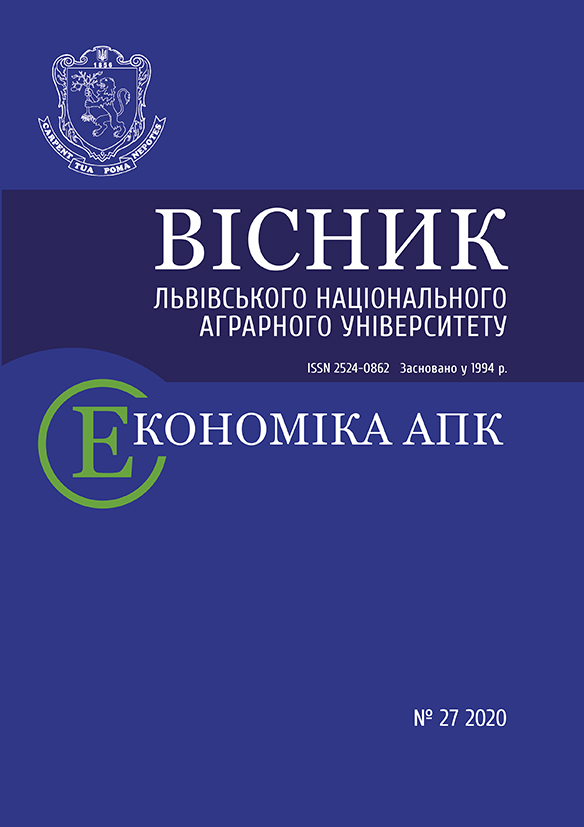Visnyk LNAU: Agronomy 2018 №22(2): 34-36
Effect of herbicides on productivity of Camelina sativa
Ivaniuk V., Candidate of Agricultural Sciences
Smalko A.,
Lviv National Agrarian University
https://doi.org/10.31734/agronomy2018.02.034
Annotation
The effective control of weeds in agricultural crops is an important condition for obtaining a high and stable harvest. There are currently no active substances in Ukraine on Camelina sativa.
In the conditions of sufficient moisture of the Western forest-steppe Ukraine, a research was conducted to evaluate certain herbicides for selectivity and effective action on weeds. It has been established that the results of the use of metazachlor and propiochloride have a partial phytotoxicity on the Camelina sativa, which is expressed in the reducing the similarity, twisting the leaves and reducing the weight of plants at the beginning of the vegetation. The weight of plants is reduced by 27–59 %, and the density is 32–86 pc/m2. In the use of metazachlor in the phase BBCH 12-14, the phytotoxicity was absent.The growth of crop capacity of Camelina sativa seeds for putting of metazachlor and propiochloride is 0,6–2,7 c/ha, or 5,3–23,9 % compared to control. The addition of Nyu-Film–17 to the metazachlor contributes to a 15,9 % increase the harvest. The increasing the metazachlor rate to 2,2 l/ha does not increase the additional growth of seeds in comparison with the norm of 1,8 l/ha, but on the contrary, there is a tendency to decrease the productivity. The most effective is the use of metazachlor after first-growth of the Camelina sativa. The adjusting the number of weeds by means of clopyralid leads to a significant damage of Сamelina sativa to diseases and reduces the crop capacity by 57 % compared to control.
Key words
Camelina sativa, herbicides, crop capacity, selectivity, phytotoxicity, weeds
Link
- Hospodarenko H. M., Rassadina I. Yu. The quality of the Camelina glabrata seeds depending on the fertilization. Downhill and mountain farming and livestock breeding. 2015. No. 58. P. 1. P. 55–60.
- Rassadina I. Yu. The efficiency of the use of mineral fertilizers under the Camelina glabrata on the podzolic сhernozem. Agrochemistry and soil science. 2015. No. 83. P. 107–110.
- Poliakov O. I. Agrotechnical and bioclimatic features the formation of the crop capacity and quality of sunflower seeds, soybeans, flax, sesame seeds, сamelina, and milkweed in the Southern Steppe of Ukraine. Dnipropetrovsk, 2011. 38 p.
- Hryhoriv Ya. Ya. The influence of sowing dates and cultivating technologies on the quality of the seeds of Camelina glabrata. News of the National University of Water and Environmental Engineering. Series "Agricultural Sciences". 2010. No. 2(50). P. 52–57.
- Demydas H. I., Kvitko H. P., Hetman N. Ya. Camelina sativa - an oilseed crop as an alternative to Camelina glabrata for the production of a biodiesel. Collection of scientific works of VNAU. Vinnytsia, 2011. No. 8(48). P. 3–8.
- Lykhochvor A. M. Features of the crop capacity formation and quality analysis of Сamelina sativa seeds depending on the fertilizer and plant protection products. ScienceRise. 2017. No. 2. P. 16–18.
- Petersen Jan. Selektivität von Herbiziden in Leindotter (Camelina sativa (L.) Crantz). Julius-Kühn-Archiv. Bd. 452. 2016. S. 154–162.



